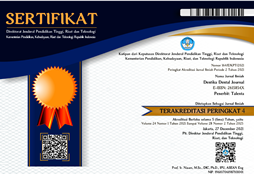CLASP RETENTION USING VARIABLE UNDERCUT DEPTHS
RETENSI CANGKOLAN MENGGUNAKAN VARIABEL KEDALAMAN GERUNGAN
DOI:
https://doi.org/10.32734/dentika.v15i1.1682Keywords:
rest-plate-Akers system, half-half, ringAbstract
Retentive force may be increased in deeper undercuts. Three clasps were examined for this hypothesis in order to analyze the retentive force change properties for each clasp design with increasing undercut depth only. A total of 36 cobalt-chromium clasps, using half-round pattern and standard casting technique were fabricated. Three groups of clasps; Rest-Plate-Akers system, half-half, and Akers were engaged in 3 increasing undercut depths (0.25, 0.35, and 0.5 mm) on natural premolars. The test model was stone duplicate of plastic replica. Clasp retentive force was measured using universal testing machine. The results showed that the retentive forces for the tested undercuts (0.25, 0.35 and 0.5mm) were 8.59±1.89, 14.74±2.70 and 15.21±1.17 N for Akers; 3.06±0.88, 4.26±0.29, and 5.9±0.53 for half-half; and 0.9±0.15, 2.06±0.60, 2.3±0.50 N for Rest-Plat-Akers system respectively. Besides, the retentive force for each clasp design increased in a different way with each incremental augmentation of undercut depth. As a conclusion, changing the undercut depth altered the retentive force of the used clasp. Therefore, a clasp chosen for a definite undercut depth also can be used for deeper undercut on the same abutment when higher retentive force is required with respect to the other indication criteria.


















